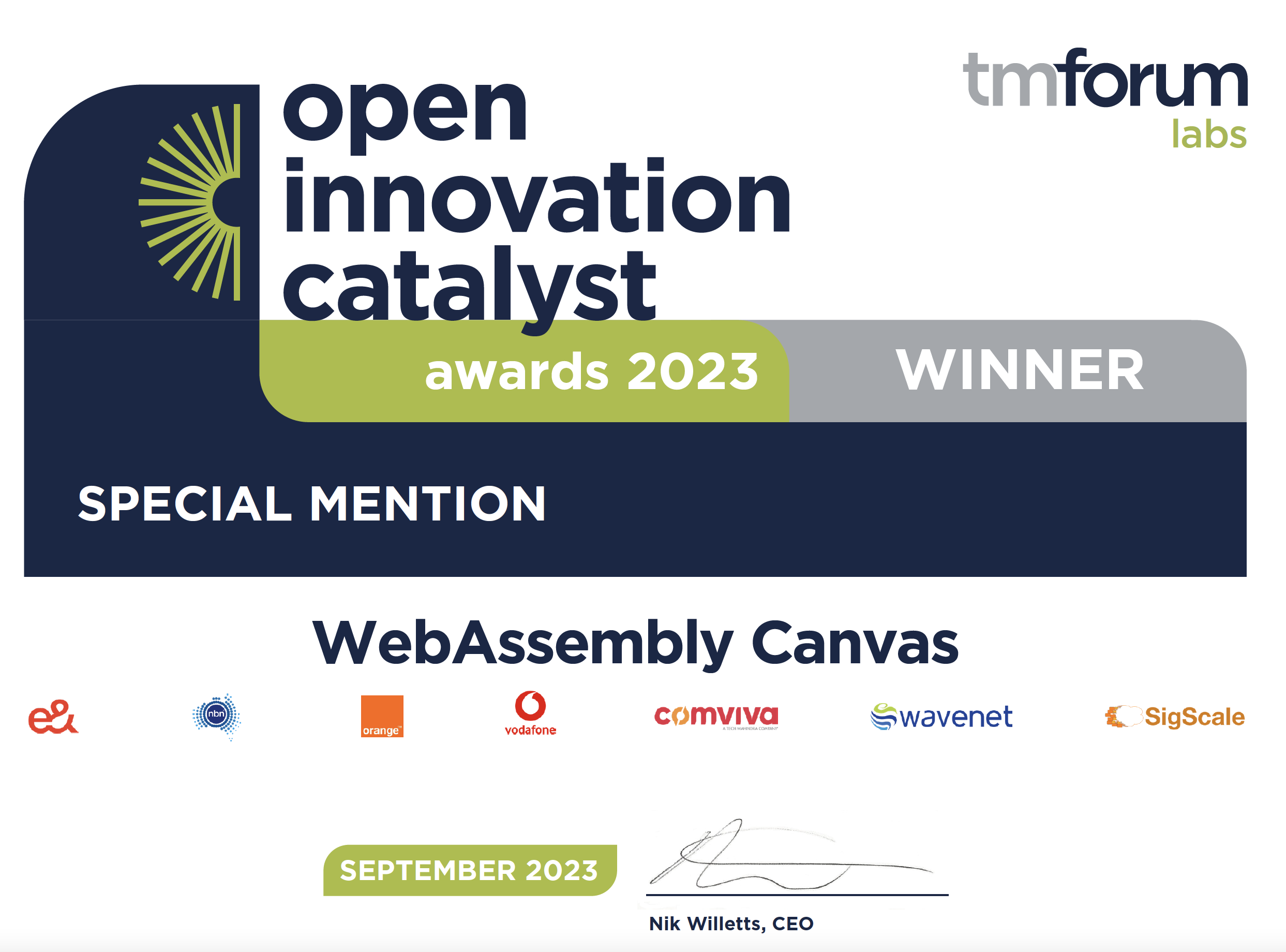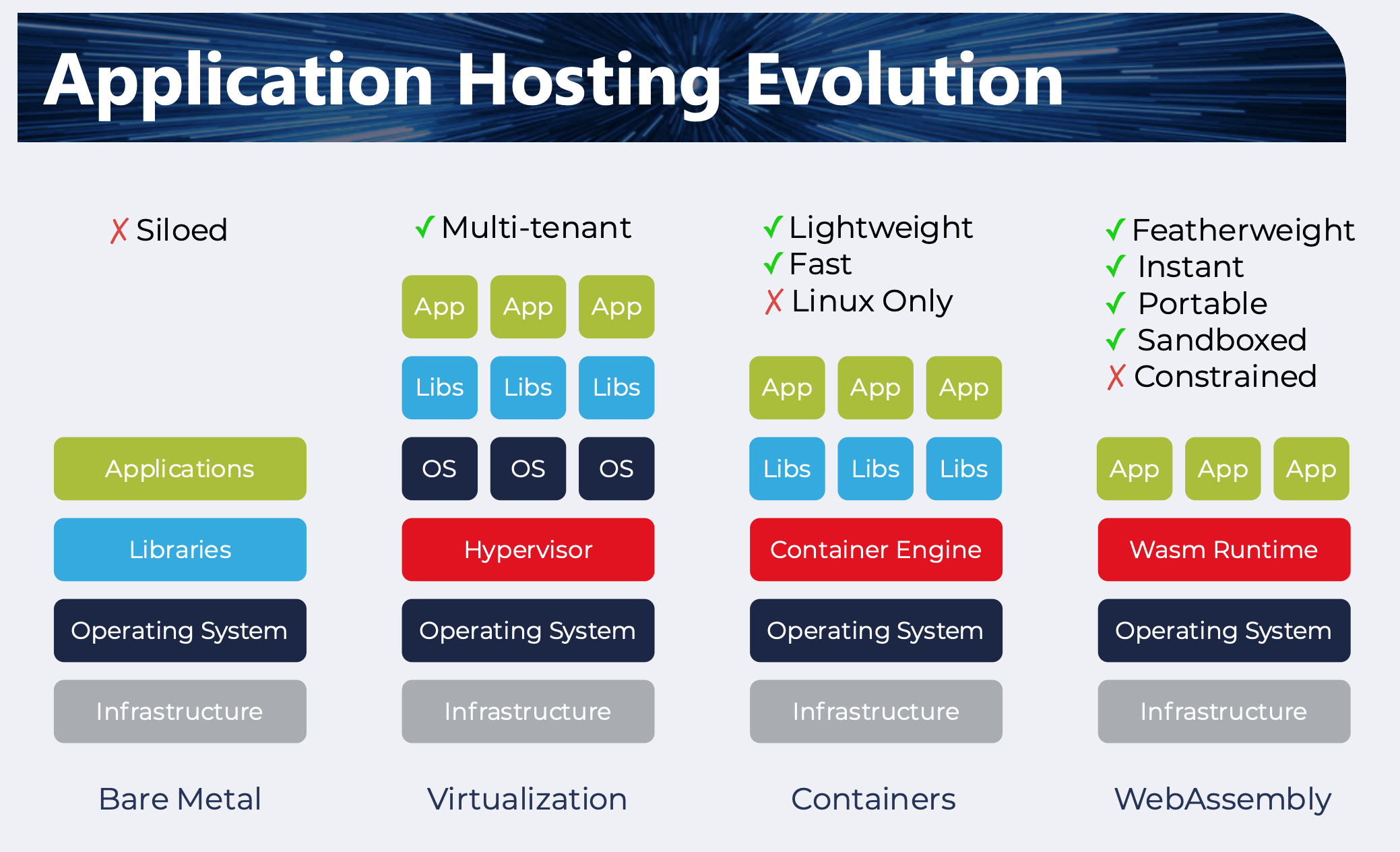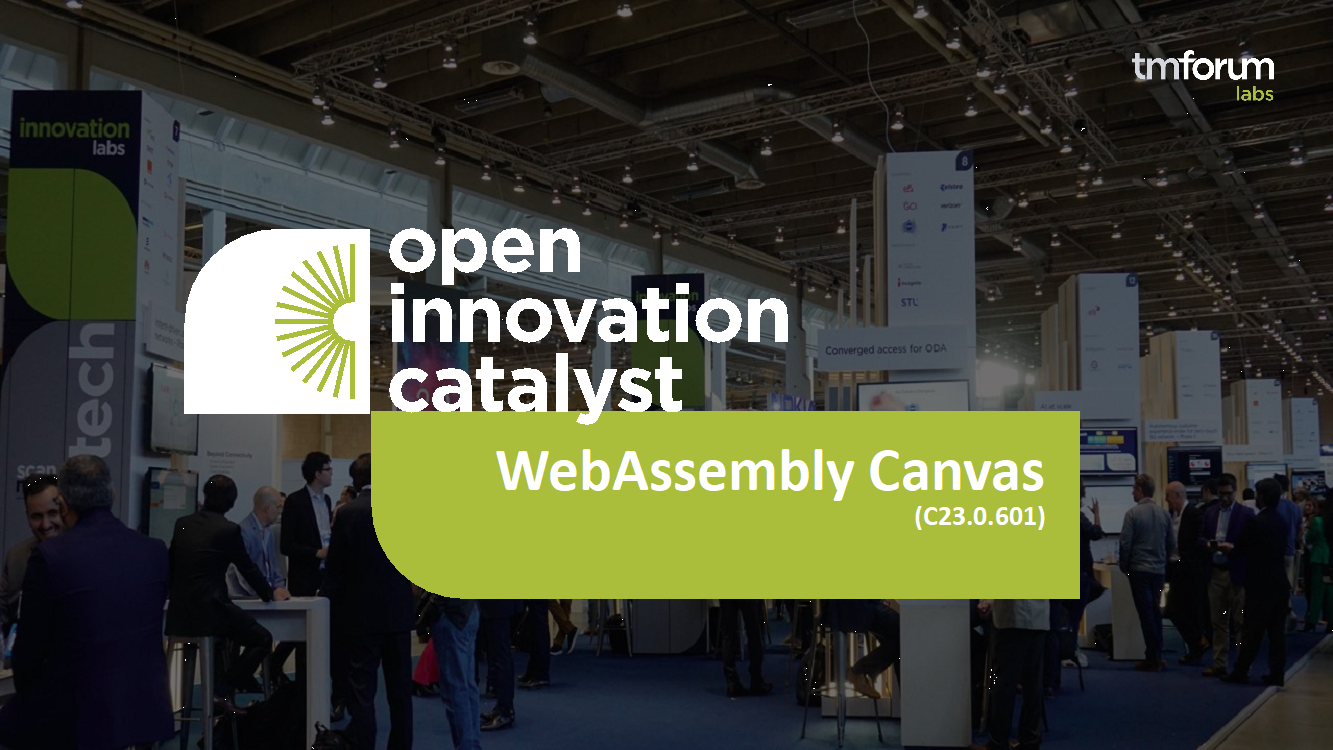Paradigm shift in compute technology
for cloud native software, saving
integration costs while improving
security, agility and sustainability.

DTW Copenhagen now behind us, it time to reflect on the Catalyst on WebAssembly Canvas we did and on the feedback received. The Catalyst program did pick up very quickly among the sponsors Vodafone, Orange, Etisalat and nbnCo and Sigscale, Wavenet and Comviva as component providers.
The WebAssembly Canvas Catalyst explored the impact of the current shift in compute technology on the ODA Canvas. Not only is computing move to the cloud, but increasingly to the edge on small footprint devices, influencing integration costs, security, agility, and sustainability considerations.
In parallel and in order to address this, new deployment models, like WebAssembly are created and standardized in different bodies, like W3C and Bytecode Alliance.
In the Catalyst we applied the ODA Canvas approach to a WebAssembly and wasmCloud deployment model, moving beyond traditional Kubernetes usage. Traditionally, the ODA Canvas utilizes Kubernetes as a container deployment model, which provides a high degree of portability, but still requires more resources and noticable boot time.
To showcase the concept, we utilized ODA Canvas compliant components for Convergent Charging, Service and Product Inventory, and Product Catalog, deployed them on Raspberry PIs, leveraging wasmCloud infrastructure. This was done by re-targeting the existing components and adapting the Actor-based component communication.
The Application Hosting Evolution

What are the potential use cases?
One significant area is the growing shift of compute instances to the Edge, especially for 5G use cases where computing needs to be closer to the user. In the WebAssembly architecture, ODA Canvas components can be easily moved to the Edge, for instance, in Private Enterprise Network setups. This greatly enhances the value of ODA components, enabling a more flexible deployment.
Further, more use cases are enabled by the availability of WebAssembly as a fundamental capability in modern browsers. ODA components can run within the browser for offline processing, for example, handling product catalog and qualification, particularly in scenarios where online access is unavailable.
These advancements extend the utility of ODA components beyond traditional deployment models, making the ODA Canvas a more versatile and valuable deployment framework for a wide range of use cases.






